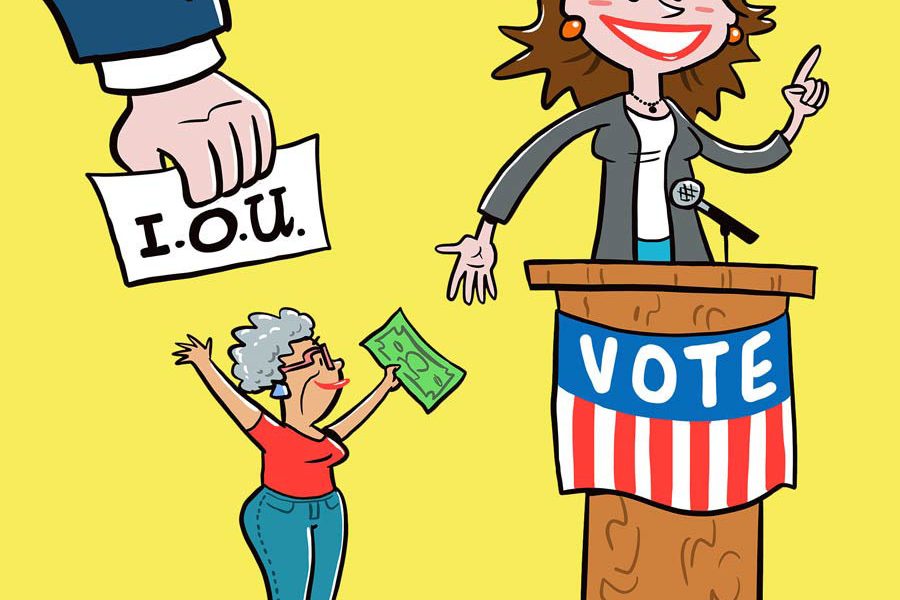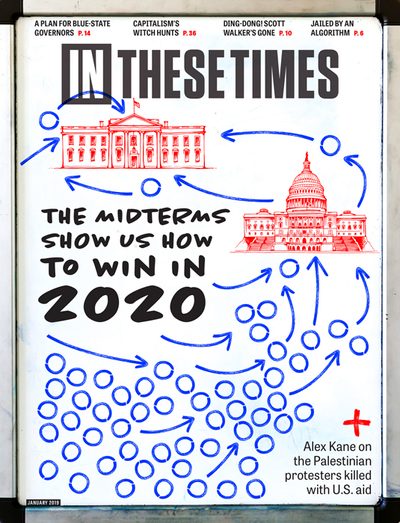What If Everyone Got $100 To Donate to the Candidate of Their Choice?
Democracy vouchers, explained,
In These Times Editors

de•moc•ra•cy vouch•ers
noun
1. When the government gives voters money that can be donated to a political candidate
“Democracy vouchers were like winning the lottery for a first-time, non-wealthy, nontraditional candidate like me.” —Teresa Mosqueda, elected in 2017 as the youngest member of, and only renter on, the Seattle City Council.
Do we really need more money in politics?
God, no — but we might need different money in politics. Currently, donors are disproportionately old, white, male and wealthy. Candidates, then, are beholden to the wrong interests. Democracy vouchers would encourage and enable the poor, those who typically couldn’t afford to donate, to participate. Then candidates might actually start listening to them.
Are vouchers in action anywhere?
In 2015, Seattle voters approved a property tax increase to finance “Democracy Dollars,” becoming the first city to institute the program. Every registered voter gets four $25 vouchers that they can donate to the municipal candidates of their choice. (The funding, however, is limited, so potential donors must act fast.)
Is this just a weird Seattle thing?
For now, yes. But Albuquerque, N.M., will likely see democracy vouchers on the ballot in 2019, and the policy is gaining momentum from Austin, Texas, to New Hampshire. Rep. Ro Khanna (D-Calif.) introduced a Democracy Dollars Act in Congress in 2018, proposing that each registered voter receive a voucher for federal elections: $25 for the president, $15 for the Senate and $10 for the House. Other variations on the public financing of elections exist already. New York City, for instance, matches small-dollar donations at a rate of 6 to 1; in Maine, candidates who meet a fundraising threshold can get state funding in lieu of accepting further private donations.
Do vouchers actually do what they claim to do?
Early evidence suggests yes. While big donors haven’t stopped giving in Seattle, small donor numbers shot up in 2017, as 18,000 residents used at least one voucher versus only 8,200 people who donated at all in 2013. And evidence shows voucher users skew younger and lowerincome than the typical donor.
This shift subverts the conventional political calculus. Multiple candidates eschewed large donations entirely, relying largely on voucher donors; this changes who you try to rub elbows with on the campaign trail. City Council candidate Jon Grant, for instance, running on an affordable housing platform, gained support by enrolling homeless people in the voucher program. (He survived the primary but lost the general.)
As more progressives across the country reject corporate money, democracy vouchers could help fuel a base of small-money donors, allowing these candidates to compete with the corporate-backed Right.
This is part of “The Big Idea,” a monthly series offering brief introductions to progressive theories, policies, tools and strategies that can help us envision a world beyond capitalism. For recent In These Times coverage of campaign finance, see, “The Case For Giving Every American $25 “Democracy Vouchers” For Every Election”, “Want Proof that Corporate Money Influences Politicians? This New Study Has It.” and “Maine Leads the Nation in Campaign Finance Reform.”








